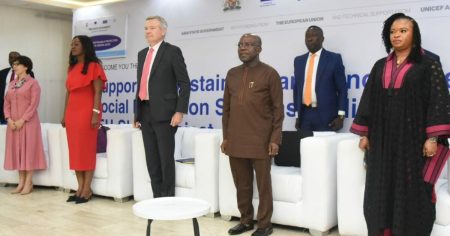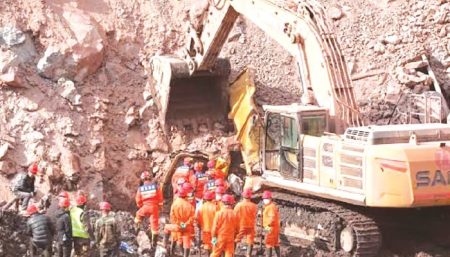Paragraph 1: The Looming Threat and Proactive Measures
Nigeria faces a significant flood risk in 2025, with 1,249 communities across 30 states and the Federal Capital Territory (FCT) identified as high-risk areas. An additional 2,187 communities are categorized as moderate risk. The projected flooding, expected to occur between April and November, is attributed to heavy rainfall, rising sea levels, tidal surges, and inadequate water management infrastructure. Recognizing the potential devastation, federal and state governments have initiated proactive measures. These include public awareness campaigns emphasizing flood preparedness, dredging and clearing of waterways and drainage systems, and relocation efforts for communities situated in vulnerable floodplains and riverbanks. The severity of the projected flooding underscores the critical need for swift and comprehensive action to mitigate its impact.
Paragraph 2: High-Risk Zones and Contributing Factors
The states facing the highest flood risk include Abia, Adamawa, Akwa Ibom, Anambra, Bauchi, Bayelsa, Benue, Borno, Cross River, Delta, Ebonyi, Edo, Gombe, Imo, Jigawa, Kebbi, Kogi, Kwara, Lagos, Nasarawa, Niger, Ogun, Ondo, Osun, Oyo, Rivers, Sokoto, Taraba, Yobe, and Zamfara, as well as the FCT. Coastal and riverine regions, particularly Bayelsa, Cross River, Delta, Lagos, Ogun, Rivers, and Ondo, are especially susceptible to flooding due to rising sea levels and tidal surges. This poses significant threats to fishing activities, wildlife habitats, and river navigation. Urban centers across the country are also vulnerable to flash and urban flooding, primarily due to intense rainfall, insufficient drainage systems, and a general lack of flood resilience infrastructure.
Paragraph 3: Tailored Forecasts and Preparedness Strategies
The 2025 Annual Flood Outlook (AFO) has adopted a more localized approach, identifying specific communities at risk, unlike previous general predictions. This granular approach empowers local governments and communities to implement targeted preparedness measures. The forecasts also assess sectoral impacts on crucial sectors like health, education, agriculture, and infrastructure, providing valuable information for policymakers and disaster risk managers. The emphasis on early response and preparedness is paramount. The AFO represents a significant advancement in flood forecasting and disaster risk reduction, enabling proactive and tailored responses at the community level.
Paragraph 4: State-Level Responses and Mitigation Efforts
States are taking proactive steps to mitigate the impact of the predicted flooding. Anambra State, for instance, has issued alerts to residents in high-risk areas and has begun clearing drainages and relocating structures obstructing water flow. The state has identified ten high-risk Local Government Areas (LGAs) and has established Internally Displaced Persons (IDP) camps for potential evacuees. Kwara State is expanding river courses, particularly the Asa River, a major source of flooding in Ilorin and surrounding areas. The government is also constructing dykes and levees to manage floodwaters and advising residents in vulnerable areas to relocate. These state-level initiatives highlight the localized approach to flood management and the importance of community engagement.
Paragraph 5: Collaborative Approaches and Community Engagement
Inter-agency collaboration and community engagement are central to the flood mitigation efforts. Ogun State is working with its 20 LGAs to implement the state’s flood alert and is collaborating with the Ogun-Osun River Basin Development Authority for effective water release management. Gombe State has implemented continuous drainage de-silting and completed gully erosion control projects to enhance water flow management. Delta State has initiated public awareness campaigns and preemptive clearing of water channels. These examples illustrate the importance of coordinated efforts and the proactive engagement of communities in mitigating flood risks.
Paragraph 6: Continued Monitoring and Relief Preparations
States are actively monitoring the situation and preparing for potential relief efforts. Nasarawa State is establishing temporary shelters for displaced persons and deploying officials to flood-prone areas. Borno State has established a flood control committee responsible for community sensitization, dredging, and drainage clearance. Bayelsa State is clearing canals in Yenagoa, the state capital, to address flash floods, and Bauchi State is continuing its awareness campaign in at-risk communities. Relief materials are also being prepared for distribution to affected populations. The ongoing monitoring and preparedness efforts demonstrate the states’ commitment to minimizing the impact of the projected flooding and providing timely assistance to those affected.














